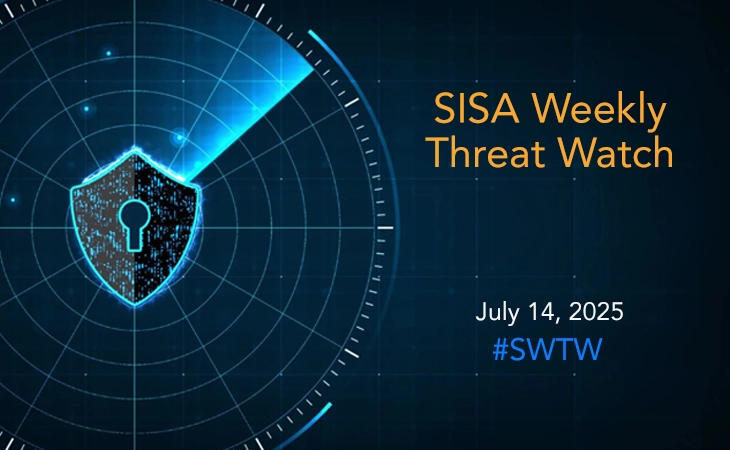

Incident Response Plan: A Guide to Cybersecurity
A robust strategy that keeps a check on the processes, helps identify abnormalities and creates a reliable communication strategy within the organization can help respond to cyberattacks quickly and efficiently. This is where an incident response plan comes into play.
The rapid uptake of digitization across industries fueled largely by new technological advancements has not just resulted in data explosion, but has also made accessing it easier and more convenient for bad actors. Besides, the ever-changing threat landscape and the shift to hybrid work environments accelerated by the pandemic has been aiding the rise in volume and complexity of cyber attacks. For instance, in 2021, businesses suffered 50% more cyberattack attempts per week than the previous year1.
Cyberattacks are on the rise and enterprises with even the best defenses can fall prey to new and emerging threats. But as forensics-driven cybersecurity experts, we believe in taking proactive measures to stay one step ahead of such security incidents. A robust strategy that keeps a check on the processes, helps identify abnormalities and creates a reliable communication plan can help organizations respond to cyberattacks quickly and efficiently. This is where an incident response plan comes into play.
An Incident Response Plan is a coordinated approach that is designed to help information security teams effectively deal with an external threat. It is an amalgamation of tools, procedures, and personnel to ensure structured investigation of an incident to contain, eliminate and recover from cybersecurity threats.
Significance of incident response
The incident response strategy helps enterprises be fully prepared for an attack, detecting its nature when the incident occurs and responding to it effectively. It also sets out the roles and responsibilities for every stakeholder to collect, analyze and act upon the information required to manage security incidences. Some of the key reasons why every organization needs to have an incident response plan are:
- Improve IT & security hygiene
- Protect organization from unknown threats and hackers
- Prevent a data breach
- Mitigate the damage caused by cyberattacks
- Streamline awareness and communication mechanism in the organization
Having an incident response plan in place ensures that in the event of a security breach, the organization will be able to defend its processes and system, minimize the disruption and limit the damage caused during and after the occurrence of the incident.
Top 3 implementation challenges for Incident Response Plan
Creating a cyber incident response plan is one thing, but successfully implementing it and making it a practice within the organization is another. With new vulnerabilities and data security risks being identified every other day, the intensity of cyberattacks is expected to escalate at an even faster rate in the coming years. These alarming conditions along with the challenges posed by the increasing skill gap make it overwhelming for an organization to execute the incident management processes.
Some of the top challenges that organizations face while implementing the incident response plan are:
1. Increasing Volume of Cyberattacks
The sudden increase in cyber risks due to the Covid-19 pandemic has affected many organizations and it is considered as one of the biggest concerns for the information security team while devising a strategic incident response plan. The diverse nature of cyber incidents with an increased frequency makes it challenging for organizations to successfully implement the strategy.
- Phishing attacks accounted for more than 80% of reported security incidents in the world in 20212.
- About 1.51 billion breaches of Internet of Things devices were recorded in the first half of 2021, an increase from 639 million in 20203.
- The total number of Ransomware attacks more than doubled in 2021 with a 105% increase from 20204.
2. Insider Threats
Cyberattacks need not necessarily originate from outside the organization. Another incident management challenge is that many security teams are ill-equipped to handle the breaches initiated within the organization. A 2022 report by Ponemon Institute reveals that insider threat incidents have risen 44% over the past two years with costs per incident rising to $15.38 million5. Employees with privileged access to the network, third parties with temporary access to the system, or accidental compromise of security protocols put critical assets and information of an organization at risk. These internal attacks have the potential of causing more damage than external threats as they can remain undetected by the organization for a longer period.
3. Budgetary Constraints
Many organizations find it difficult to plan for incident management and implement it because they lack the required budget for such exercise. 83% of small and medium-sized businesses are not financially prepared to recover from a cyber attack6. With technologies like multi-cloud and AI gradually becoming a priority for enterprises, the limited budgets for security implementations have become one of the major concerns for CISOs. Less bandwidth for defending the processes across the network only adds up to the other pressing challenges for organizations.
A step-by-step guide to an incident response plan
Organizations must adopt a structured approach for implementing the incident response plan to ease out the process and better deal with the challenges. The 6-phase approach described below to handle a cyber breach before, during, and after its occurrence helps understand the root cause of the incident and analyze the remediation steps.
Phase 1: Preparation
The preparation phase is extremely crucial for an organization to have a concrete base for its incident response plan. In this phase, the security team needs to review the existing security policies and create a communication plan with all the stakeholders.
In addition to that, it is also essential to identify which critical incidents the team should focus on, and which assets are the most sensitive for an organization. Based on these critical findings, the infosec teams must ensure that they have the required access to all the systems and tools to respond to an incident and train their members for the same.
Phase 2: Identification
The second phase includes identifying any alien activity that is a deviation from normal operations within the organization. The security team also needs to recognize if those activities represent potential or actual security incidents. If any deviation gets identified as a potential incident, there must be actions taken to understand the severity of the same, collect additional evidence, and document the requirements.
Phase 3: Containment
After identifying the security incident, the first step is to contain it and protect the system from any further damage. The security team can either opt for short-term containment or long-term containment. Short-term containment involves taking down the hacked servers or else isolating the network under attack. On the other hand, if the organization goes for a long-term containment, it must apply temporary fixes to the affected systems and strengthen the access management. The containment phase also involves identifying and removal of any personnel involved in the breach.
Phase 4: Eradication
The next step is to identify the root cause or the entry point of the attack to remove the malware and protect the organization from a similar incident in the future. It involves safeguarding the assets with strong authentication, updating the system, and applying immediate patches to the vulnerabilities. All the stakeholders must be aligned and cautious with this step as any trace of the malware left in the system may again result in the loss of valuable data.
Phase 5: Recovery
After taking all the preventive measures to contain and eradicate the security incident, it is vital to ensure that another similar issue does not arise sometime later. At this stage, the security teams should take decisions over when the affected systems can be brought back online to perform normal functions. All the compromised systems must also be verified, tested, and regularly monitored for a set period to ensure they are functioning normally.
Phase 6: Lessons Learned
Once the incident gets over and all the affected systems recover and get back to normalcy, the last phase of the incident response plan must be initiated after about two weeks. It involves preparing documentation of all the processes used to respond to an incident, how it was contained, eradicated and how the systems recovered from it to further identify its scope. The security teams must also investigate the areas where the team did not perform effectively and need adequate training to improve performance and better handle the incidents.
Key benefits of having an Incident Response Plan
A properly designed security incident response plan can help organizations detect threats and handle the situation in such a way, which limits damage and reduces recovery time and costs. That apart, it can offer several other benefits leading to a stronger security posture.
- An efficient incident response plan can help reduce the extent of damage caused by cyberattacks and also the costs of handling them which include escalation, notification, lost business and response costs. According to IBM’s ‘Cost of a Data Breach Report 2021’, the global average total cost of a data breach is $4.24 million7.
- Enable faster mitigation of security risks and vulnerabilities and reduce business downtime after the occurrence of a security incident by fixing the damages sooner.
- Protect organization from reputational damage. Attacks resulting in data loss may lead to lost customer trust; investing in building an IR plan shows an organization’s commitment to privacy and security.
- Meet regulatory compliance and protect the organization from hefty fines and penalties. Stringent security compliances and privacy laws such as PCI DSS, GDPR, HIPAA, etc., mandate the organizations to have an incident response plan for improved data security.
Careful planning and investigation are vital to strengthen the organization’s security posture and efficiently handle security incidents. It not only helps the organization mitigate the risks in a structured manner but also improves communication and defense mechanism within the enterprise. Devising an incident response plan cannot be a one-time exercise with the rapidly evolving threat landscape and needs to be updated and strategized regularly to help defend organization from emerging threats.
References:
- https://www.darkreading.com/attacks-breaches/corporate-networks-saw-50-more-attacks-per-week-in-2021-
- https://www.forbes.com/sites/chuckbrooks/2021/03/02/alarming-cybersecurity-stats——-what-you-need-to-know-for-2021/
- https://www.iotworldtoday.com/security/iot-cyberattacks-escalate-in-2021-according-to-kaspersky
- https://venturebeat.com/2022/02/17/ransomware-attacks-surged-2x-in-2021-sonicwall-reports/
- https://www.proofpoint.com/us/resources/threat-reports/cost-of-insider-threats
- https://www.insurancebee.com/blog/smb-owners-unprepared-for-cybercrime
- https://www.ibm.com/downloads/cas/OJDVQGRY
Latest
Blogs
Whitepapers
Threat-a-Licious
Customer Success Stories

SISA is a Leader in Cybersecurity Solutions for the Digital Payment Industry. As a Global Payment Forensic Investigator of the PCI Security Standards Council, we leverage forensics insights into preventive, detective, and corrective security solutions, protecting 1,000+ organizations across 40+ countries from evolving cyberthreats.
Our suite of solutions from AI-driven compliance, advanced security testing, agentic detection/ response and learner focused-training has been honored with prestigious awards, including from Financial Express, DSCI-NASSCOM and The Economic Times.
With commitment to innovation, and pioneering advancements in Quantum Security, Hardware Security, and Cybersecurity for AI, SISA is shaping the future of cybersecurity through cutting-edge forensics research.
Company
Resources
Quick Links
Copyright © 2025 SISA. All Rights Reserved.
 USA
USA India
India APAC
APAC Middle East
Middle East Global
Global





 Facebook
Facebook Linkedin
Linkedin  X
X Youtube
Youtube





